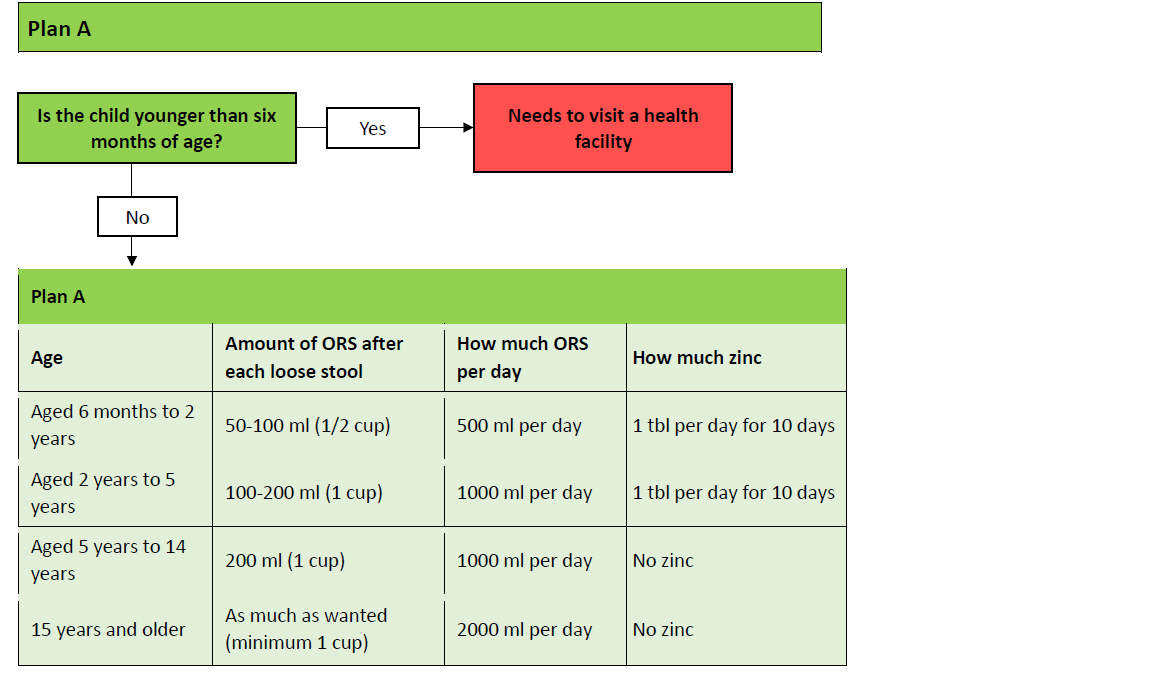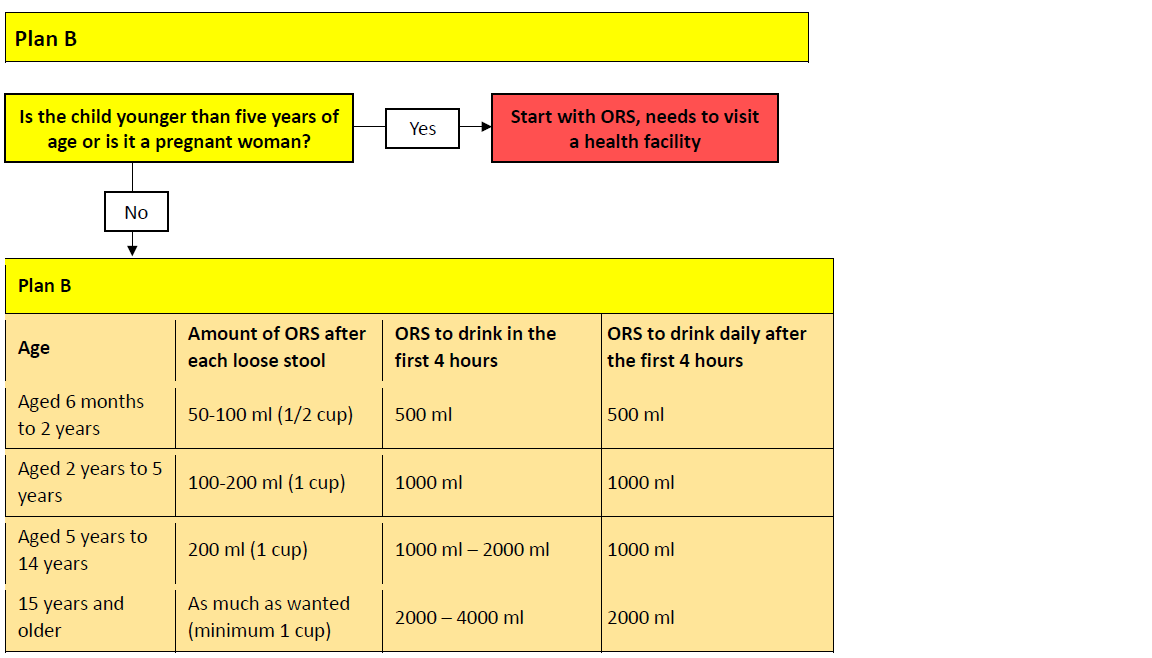10. Giving oral rehydration solution (ORS)
Overview
Oral rehydration solution (ORS) is the first step in managing people who are suffering from diarrhoea and dehydration.
If a person has no signs of dehydration or signs of mild dehydration (see Action tool Assessment of dehydration), they can be treated at home.
** Caution is required towards people who show signs of malnutrition. A child or adult with a red or yellow mid upper arm circumference (MUAC) measurement should be referred immediately to a health facility for treatment or prevention of dehydration. ** (see Action Tools, Measuring acute malnutrition in emergencies and Measuring mid upper arm circumference for further information on MUAC and on malnutrition).
What do to and how to do it
How to give ORS
It is important to teach mothers and caregivers to administer ORS to children correctly, to help the child get better and prevent the epidemic from spreading.
First, use the Action Tool Assessing dehydration to decide whether to opt for action Plan A, Plan B, or referral to a health facility. Based on the assessment of dehydration, follow either Plan A or B as detailed below:


Advise people and caregivers on the following:
- Mothers should continue breastfeeding
- ORS should be given regularly in small amounts (small spoons for children under two years of age and sips from a cup for older people)
- If the person vomits, wait 10 minutes and then continue to give ORS but more slowly.
- If vomiting continuous consult health facility
- Advise the person to come back to collect more ORS if diarrhoea continues and no ORS is left
- 50 ml = ¼ cup, 100 ml = ½ cup, 200 ml = 1 cup

